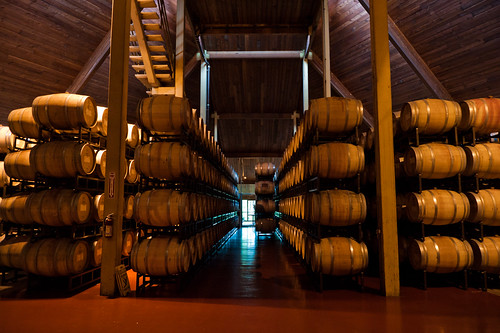After fermentation and racking comes probably the hardest part of making wine aging it. It’s one of those necessary evils of wine making. As a society we have trouble with delayed gratification and this will test your patience for sure.
Why Age Wine Prior to Bottling?
Aging prior to bottling is necessary for two reasons. The most notable reason is shaping the flavor with oak barrels or chips. Most every red wine and a few whites are aged in oak for the flavors and tannins it adds to the flavor profile.
Another critical reason to age wines prior to bottling is to make sure all chemical reactions have completed. If wine is bottled while fermentation, malolactic fermentation, or any other chemical process is underway you’ll end up with a funky sparkling wine.
Carbon dioxide created during these chemical reactions must go somewhere. In a fermenter it escapes through the air lock. In a bottle…it can’t escape. Because it can’t get out it will either blow out the cork or it will stay in the wine itself as a liquid. Trapped carbon dioxide will turn to carbonation once opened.
Creating sparkling wine sounds magical and all but if you didn’t intend to make this kind of wine it’s probably not going to taste very good. I’ve had a sparkling cabernet due to malolactic fermentation in the bottle and it was nasty stuff.
Aging Vessels
The most traditional and romantic aging vessel is the oak barrel. They look gorgeous all stacked up with little red stains dripping down. Despite their good looks oak barrels are a lot of work to maintain.
In addition to increased maintenance barrels also have a life span of only 5-7 years. Very few wineries use a barrel beyond 7 years as it contributes nearly no oak flavor.
Barrels are typically around 59 gallons and thus more suited for large-scale productions (compared to an amateur wine makers needs). Half barrels of 29 gallons are available for the smaller scale maker.
Another traditional vessel is the carboy. These look like those jugs on top of water coolers. Today carboys are available in both glass and food grade plastic.
A word about plastic carboys…don’t. These flexible bottles are marketed as a safer alternative to glass carboys because they don’t shatter and cut you to pieces when they break. However, moving plastic carboys causes them to flex and pull air through the seals.
If you can keep your plastic carboy in one spot without moving it you might have ok luck with it. However, I don’t believe in making wine in containers that come from petroleum products. You may feel differently.
An older and less seen aging vessel is the concrete tank. Huge and heavy about sums it up.
The newest aging container on the scene is the flex tank. Designed to micro-oxygenate wine similarly to a barrel yet have flexibility in size. Some tanks are flexible, others are rigid but have a floating top so that whatever the level of wine is it will always be covered.
How Long to Age Wine Prior to Bottling
This is a topic of study unto itself. For the most part aging prior to bottling is a function of grape varietal, flavor profile, and the mouth-feel you’re trying to achieve.
Barrel aging can last anywhere from a few months to seven years or so. In containers other than barrels you generally will age a wine as long as you need to finish any chemical reactions and get oak flavors from chips or cubes (a much quicker process). This happens in three to nine months or so.
Click here to go back to the wine making process.
Photo by John.


2 Replies to “Aging Wine”
Comments are closed.